Legend Of The Demon Cat (Film Review)
- By Jack
- Category: 媒体
- No comment
- Hits: 3.39k
When you have the venerable Chen Kaige at the helm, you can expect lush visuals that are hard to ignore. Colours, textures, movement, all come together in an airy dance that is pure foreplay to the eyes.
CGI fever has overtaken many modern films in China, no doubt due to the rising younger audience who grew up on a diet of dreamy and dramatic gaming graphics, but 5th-generation filmmaker Chen has bowed only slightly to that with Legend of the Demon Cat. Using it only to refine his aesthetic vision, the effect is tangible. And that’s paw-tastic.
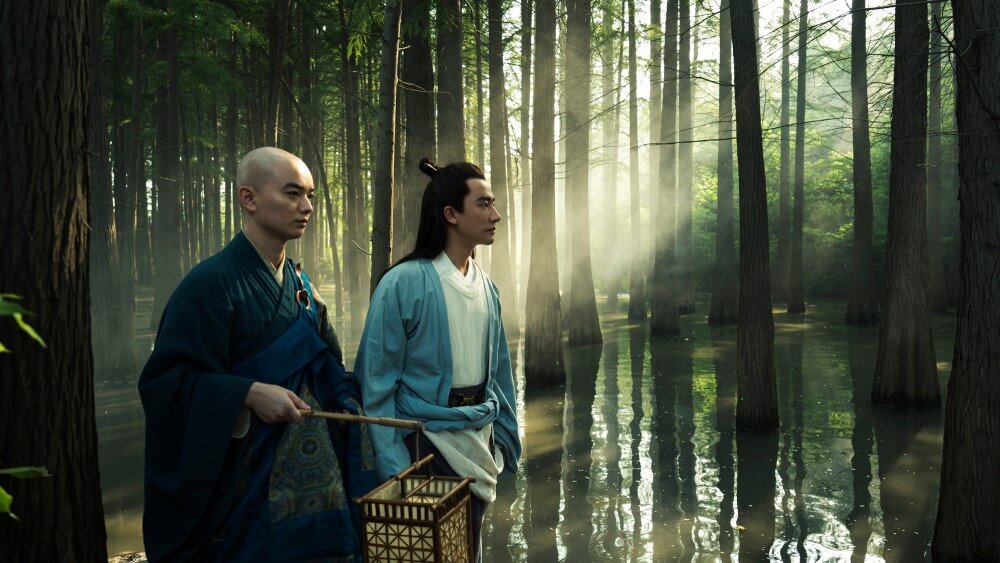
In this epic tale, the famous exorcist Monk Kukai (Shota Sometani) travels to the imperial palace to investigate the ailing Emperor. At his sudden demise, Kukai, joined by the righteous scribe Bai Le Tian (Huang Xuan), follows the suspicious trail of a supernatural cat on a killing spree.
Set in one of the most vibrant ages in Chinese history, the Tang Dynasty, Legend of the Demon Cat is many things – period drama, fantasy horror, detective flick – but it is ultimately, and quite surprisingly, a love story.
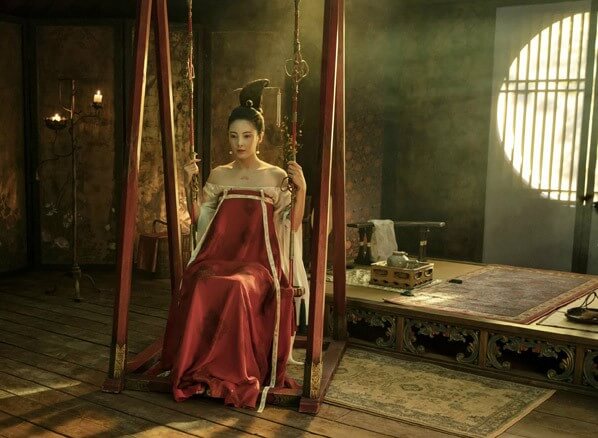
As both Kukai and Le Tian follow the bloody paws of the black cat, a tale of vengeance and love unspools and we’re introduced to an extensive, if a little convoluted, network. Featuring notable historical figures, such as the Emperor Xuanzong (Zhang Luyi), poet Li Bai (Xin Baiqing) and even legendary beauty Yang Guifei (Sandrine Pinna), the story takes us one generation before the film to understand the elusive motives of the creature.
Based on the novel Shamon Kukai Tou no Kuni nite oni to utage su by Baku Yumemakura, the material is suitably creepy and dark. With gouged eyeballs and live burials, the grit is there to satisfy gore hounds. But this works best juxtaposed against Chen’s flamboyance, depicted in florid feasts and saucy courtesans, when the whole effect becomes deliciously visceral.
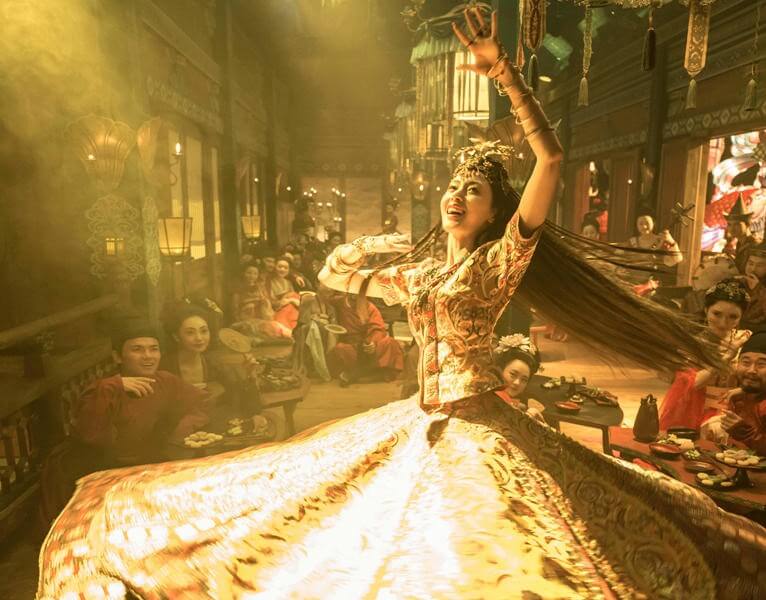
There’s no room to exhale as Chen reveals his $200 million Chang’an set in stunning cinematography. Blooming trees draped over languid ponds, cloud motif handrails on a staircase, giant fabric lanterns shaped like dragons and carps, there’s something incredibly satisfying about knowing that these were all real. In fact, the whole set was so exquisite, it is now being turned into an actual theme park. This, is Instagram heaven.
Following the characters from set to set, action framed within natural frames, the effect through the precise lens work is picturesque. Nothing is lost to the hungry eye, as every intricate handle, shelf and door lend their role in giving the film a lux look. And that’s not even touching on the lavish costumes. Instead of going for gravity-defying headpieces and impossible-to-wear armour, Chen has managed his styling with nuance and grace, resulting in a more refined look. The elegant decadence comes in even more during the grand scenes, when thousands of extras and deft sweeping camera-work does what no CGI wizardry can ever achieve – an authentic sense of awe.
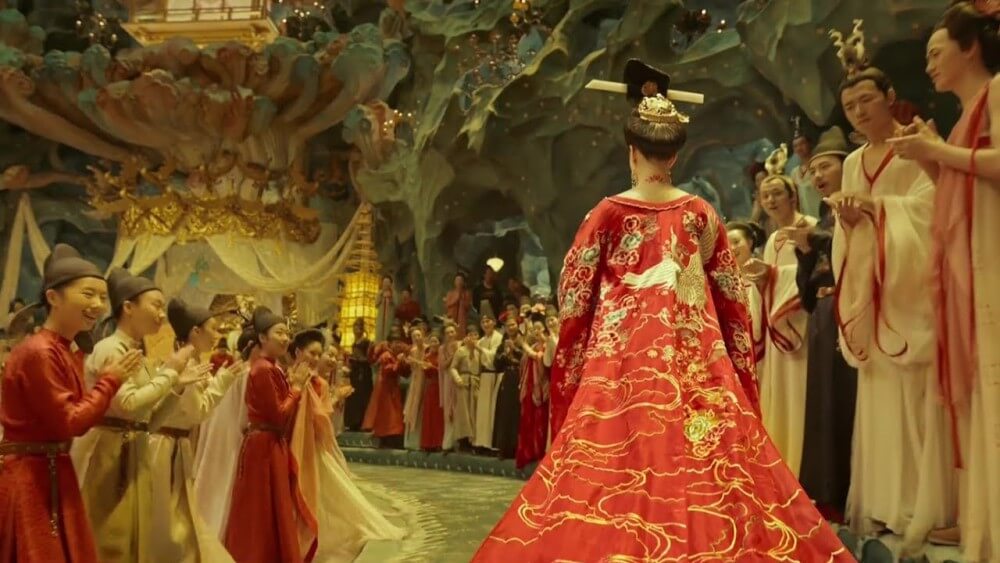
Where Demon Cat could have improved upon, was possibly on the flow between stories. When faced with such a massive ensemble, things (and motives) can get easily lost in between lines, especially when some are too cryptic for their own good.
In certain scenes, Monk Kukai is almost obnoxious in his speech, something which doesn’t pair too well to his personal story. His poet friend Le Tian is also erratic to the point of being bipolar, one moment all swagger; the next, as lost as a puppy.
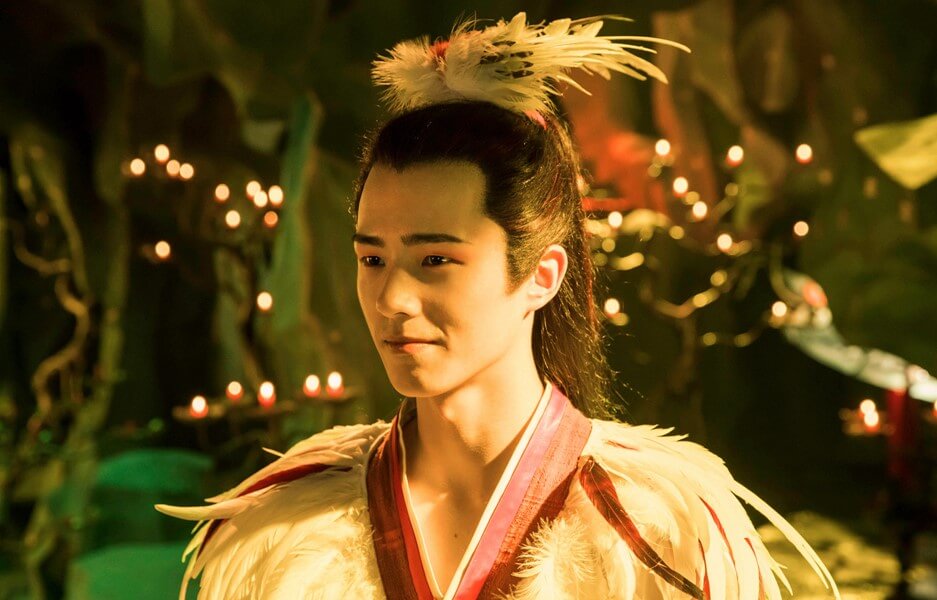
Actors Oho Ou and Liu Haoran are the most difficult to digest for me. The Crane Brother who act as Dan Long and Bai Long respectively, came a little too late to properly rivet the role they play at the end. A key pair to the whole tale, and tasked to deliver the key message, I felt the fluffy entrance diluted the impact of their characters.
Still, Legend of the Demon Cat is that epic movie which fulfils most of its promise without breaking its cred. In an ambitious sea of fantasy tales to come from the Mainland, overwrought by effects and cheese, it stands out on its integrity and vision. A promising way to start 2018.